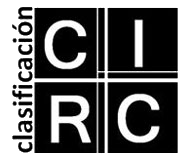Constructions of television characters in reality shows.
DOI:
https://doi.org/10.24215/16696581e954Keywords:
social media, reality shows, audiencesAbstract
Big Brother is a reality show based on coexistence and isolation. It returned to Argentine television in 2022 with its tenth broadcast after 6 years without new editions. The product was well received by audiences and achieved a strong presence on social networks as a space for discussion and creation of parallel content about what was broadcast during the program.
This work aimed to investigate the uses and appropriations of social networks by Big Brother audiences; and the role of the direction of the reality show in the production of meanings. We sought to identify the construction of a narrative around the participants, through the intervention of both actors.
Through an analysis of the content of six selected broadcasts and a survey of tweets simultaneously with the latter, this work was guided by the following questions: What role do audiences play in the decision-making of this reality show? What relationship does the interaction of the audiences have with the production of meanings by the production? How is a narrative constructed that more or less favors one character or another?
Downloads
References
Abela, J. A. (2002). Las técnicas de análisis de contenido: una revisión actualizada.
Castro, C. (2002). La hibridación en el formato y pautas para el análisis de Gran Hermano. ZER: Revista de Estudios de Comunicación= Komunikazio Ikasketen Aldizkaria, 7(13).
Castro, C. (2003). Marcas multiculturales en Gran Hermano. Los casos Español y Portugués (Tesis de doctorado). Recuperado de https://hdl.handle.net/10803/4207
Duran, J. (2012). El fenómeno de los fans e ídolos mediáticos: evolución conceptual y génesis histórica. Revista de estudios de juventud 26. 13-29.
Eco, U. (1992). Estrategia de la ilusión. Buenos Aires: Ediciones de la Flor.
Gomez, C. E., & García, M. E. (2020). La realidad mediatizada: los reality shows en la era de las redes sociales en Argentina. La Escalera-Anuario de la Facultad de Arte, (30), 17-37.
Jenkins, H. (2008). Convergence Culture: La cultura de la convergencia de los medios de comunicación. Barcelona: Paidós.
Jost, F. (2012). El culto de lo banal: De Duchamp a los reality shows. Buenos Aires: Libraria.
Morley, D., & Silverstone, R. (2007). Comunicación y contexto. Perspectivas etnográficas
sobre la audiencia de medios. Estudios de Comunicación y Política, (4), 69-87.
Orozco Gómez, G. (1997). La investigación en comunicación desde la perspectiva cualitativa. Guadalajara-México: IMDEC.
Pozo Pera, M. P. (2018). Los reality shows: amor y odio en redes sociales (Tesis de maestría). Recuperado de http://dspace.casagrande.edu.ec:8080/handle/ucasagrande/1513
Rovito, C. (2004). Sonríe: Te estamos filmando: un análisis de los reality shows. Buenos Aires: Instituto Movilizador de Fondos Cooperativos
Downloads
Published
How to Cite
Issue
Section
License
La aceptación de un original por parte de la revista implica la cesión no exclusiva de los derechos patrimoniales de los/as autores/as en favor del editor, quien permite la reutilización, luego de su edición (postprint), bajo una Licencia Creative Commons Atribución-NoComercial-CompartirIgual 4.0 Internacional (CC BY-NC-SA 4.0)
Acorde a estos términos, el material se puede compartir (copiar y redistribuir en cualquier medio o formato) y adaptar (remezclar, transformar y crear a partir del material otra obra), siempre que a) se cite la autoría y la fuente original de su publicación (revista y URL de la obra), b) no se use para fines comerciales y c) se mantengan los mismos términos de la licencia.
La cesión de derechos no exclusivos implica que luego de su edición (postprint) en Question las/os autoras/es pueden publicar su trabajo en cualquier idioma, medio y formato; en tales casos, se solicita que se consigne que el material fue publicado originalmente en esta revista.
Tal cesión supone, también, la autorización de los/as autores/as para que el trabajo sea cosechado por SEDICI, el repositorio institucional de la Universidad Nacional de La Plata, y sea difundido en las bases de datos que el equipo editorial considere adecuadas para incrementar la visibilidad de la publicación y de sus autores/as.
Asimismo, la revista incentiva a las/os autoras/es para que luego de su publicación en Question depositen sus producciones en otros repositorios institucionales y temáticos, bajo el principio de que ofrecer a la sociedad la producción científica y académica sin restricciones contribuye a un mayor intercambio del conocimiento global.















































